In the middle to late 60’s Frank Zachary, the art director of Holiday Magazine often sent artists out to report. The topics ranged from the growth of postwar industrial Europe to the current happenings on Wall Street and to an article about a specific city.
Artist Don Kingman went to San Francisco for an article titled “Even the air is different in San Francisco” and produced a beautiful two page spread showing the landscape of the city through ink drawing.
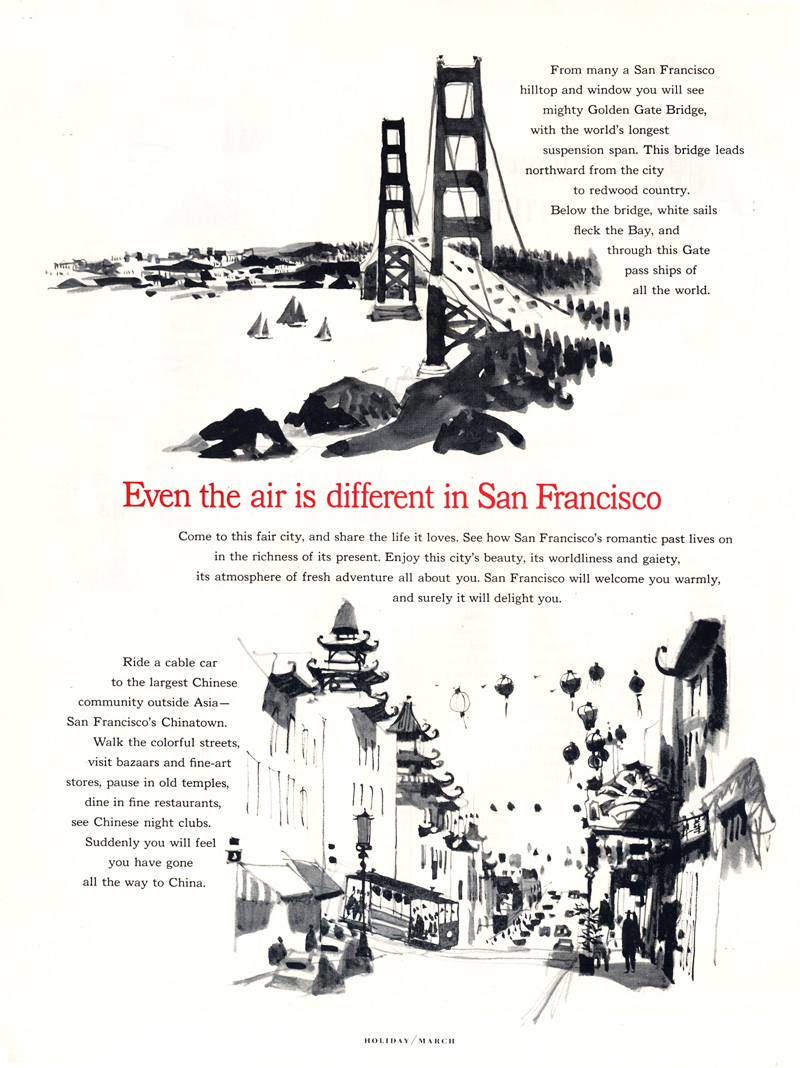
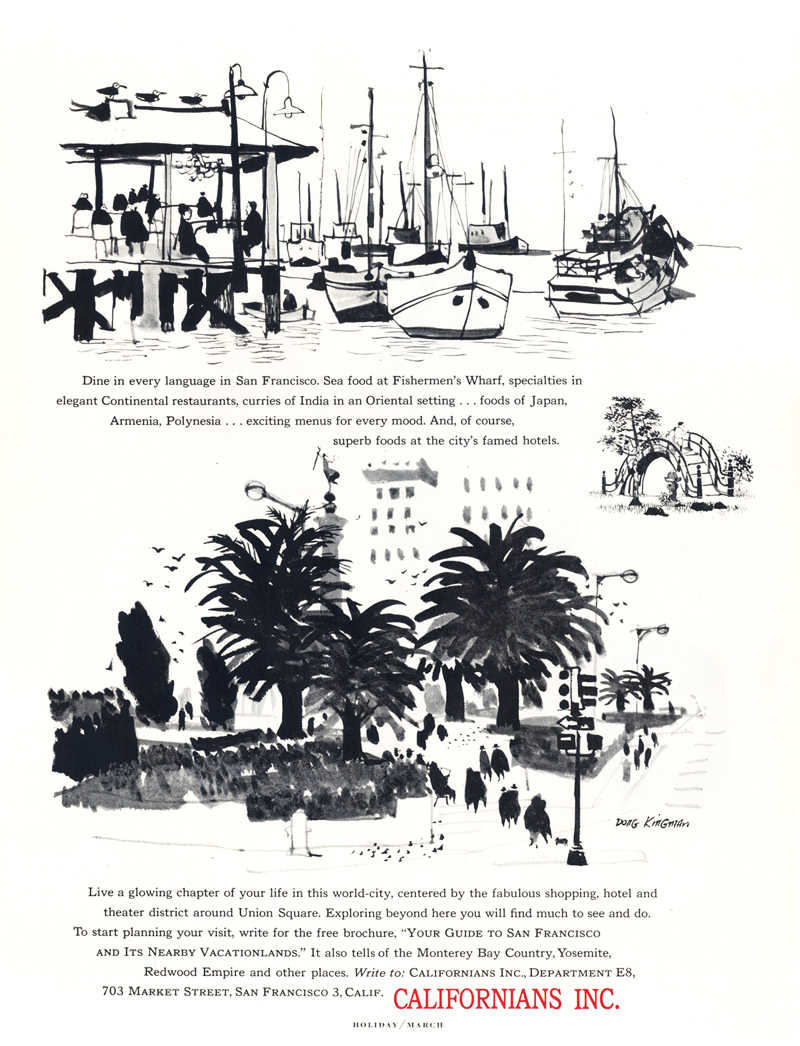
Another artist, this time the famed English illustrator Ronald Searle, was a regular contributor to Holiday.
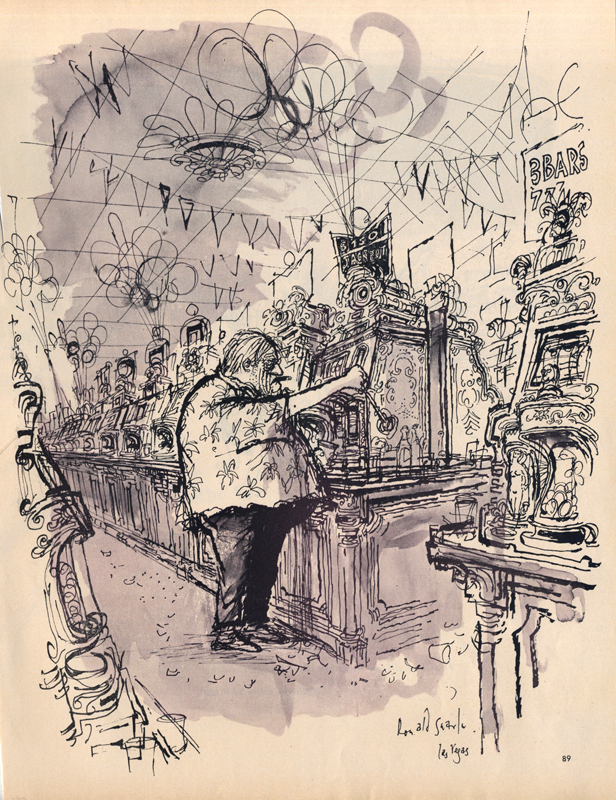
Searle said: “In the ‘fifties, Punch was very keen on artists getting out and about. All my early New York features were made for it. In the ‘sixties and ‘seventies the initiative came from America. I worked for Holiday Magazine for about fifteen years, regularly covering America and Canada, occasionally, Europe. In some cases I was allotted fifteen to twenty pages a feature, in full colour – and often had to provide the text. Punch died and so did Holiday and Life Magazine and the reportage field became virtually non-existent!”**

Holiday Magazine sent Searle west to record the sights and sounds of Las Vegas for a feature.
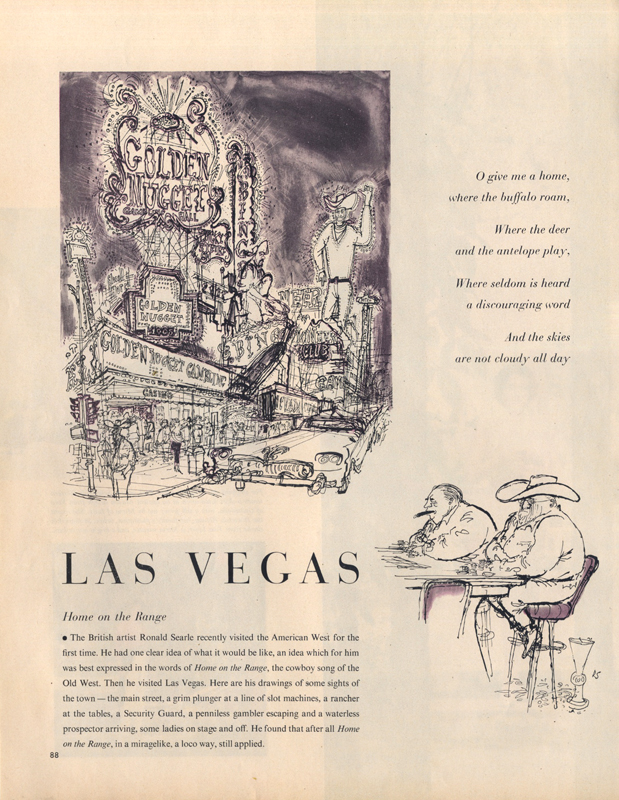
Is reportage “non-existent” today as Searle points out? It may not be a regular feature in magazines but occasionally work will crop up harkening back to this Golden Era.
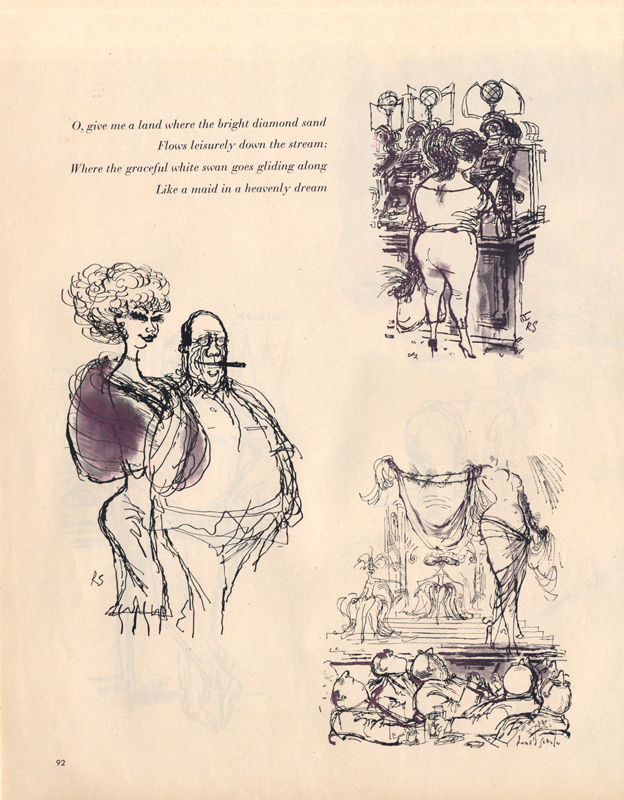
The practice seems to have evolved and continues with websites such as www.urbansketchers.org and the Masters Program at the School of Visual Arts (“Illustration as Visual Essay”). In the Masters Program many of the drawing philosophies of Robert Weaver are kept alive and continue to this day. Artists are encouraged to draw “what they know” and create a series, often intermixed with on-the-spot drawing.
Visual journalism has a great deal of merit. As words can communicate an author’s thoughts and feelings, an artist’s line can do the same, often in a more visceral and concise manner. Reportage is another tool, another option that is underutilized today.

Legendary art directors such Lionni, Gangel and Zahary viewed illustration in broad terms. Artists not only provided imagery for a story; they told the story with their images, with their viewpoint, filtered through first hand experience. By all accounts, attention spans today are shorter than ever; illustrative reportage has a unique ability to communicate the facts through a viewpoint that is both concise and universal (language is no barrier!).
Utilized correctly, reportage could be more than a novelty harkening back to an earlier day. It could be a driver of dialogue in the future.
* My thanks to Daniel Zalkus for all his hard work putting together this fascinating, inspiring series for Today's Inspiration. Daniel is an illustrator with a passion for on-the-spot drawing. You can see some of Daniel's own excellent work at his website. Many thanks again, Daniel! ~ Leif
**Quote taken from “Line No.1” a journal published by the Department of Art and Design Pathway. APU, Cambridge.






0 comments:
Post a Comment